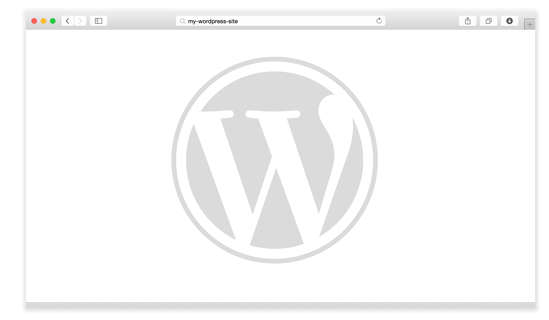Common WordPress Issues and How to Fix Them
Key Takeaways
- To resolve the ‘White Screen of Death’ error in WordPress, deactivate all plugins one by one, or change your theme to the default WordPress design. If you cannot access your admin panel, manually deactivate the plugins and themes over FTP by appending ‘_old’ to the end of the name.
- If the ‘Reset Password System’ is not working, you can reset your password via FTP by downloading your active themes functions.php file and adding the following: wp_set_password( ‘password’, 1 );. Alternatively, you can manually reset your password using phpMyAdmin to edit your WordPress database.
- To fix ‘Insufficient Memory’ issues in WordPress, increase your WordPress memory limit by adding the following line to your WordPress config file: define( ‘WP_MEMORY_LIMIT’, ’64M’ ). Replace ’64M’ with the desired amount if you need a higher or lower limit.
For many developers, WordPress is a go-to solution for both large and small jobs, however as with most things in life, it’s far from a perfect solution. Despite being a leading platform on the web, WordPress’ versatility makes it difficult to pinpoint the sources of failure when something breaks. While it’s impossible to explain every WordPress issue within this article, the guide below should help you navigate a few of the most common mistakes.

The White Screen of Death
For the few readers who are fortunate enough to have never encountered the white screen of death, this error consists of a blank screen loading when you try to access the site in question.
The two major causes of this error are compatibility issues from plugins and themes. If you can access your administration panel, the best way to pinpoint this error is to try deactivating all your plugins one by one, and if that doesn’t work, then try changing your theme to the default WordPress design.
The First Steps
If you can’t access your administration panel, you’ll have to manually deactivate the plugins and themes over FTP. After logging into your server, navigate to the plugins directory (usually wp-content/plugins) or the themes directory (wp-content/themes) and append ‘_old’ to the end of the name.
From there try accessing your admin panel. If you get in, you can try reactivating your plugins or themes individually until you recreate the issue. Once that happens, you’ll know the primary source of your issues.
Advanced Troubleshooting
For more advanced troubleshooting, you can also go into your wp-config file and set the WP_DEBUG value to true (as shown below):
define( 'WP_DEBUG', true );
After doing this, navigate to the page with the error and you should see the details of what is causing your errors. Once you are done, be sure to disable this feature by setting the value to false (as shown below):
define( 'WP_DEBUG', false );
Maintenance Mode after an Upgrade
Updates are a vital part of keeping your WordPress website functional. Occasionally, however, the system doesn’t clean up all the files from the process. If you ever get the message ‘Briefly unavailable for scheduled maintenance. Please check back in a minute.’ After updating your site, then you most likely need to remove your .maintenance file manually.
To do this, log into your website via your FTP program and delete the .maintenance file in your root folder. Your site should now work properly.
Reset Password System is not Working
The Simple Method
If you’re using the default admin user (i.e. your username is admin) you can reset your password via FTP.
-
Access your site via FTP and download your active themes functions.php file
-
At the beginning after the opening
< ?phpline, add the following:wp_set_password( 'password', 1 );. In this command, the 1 is the user ID, and password should be changed to your desired password. -
Upload this file to your site.
-
After logging in, go back to the functions.php file and remove the code you just entered because it will otherwise reset your password every time the user logs in.
The Complex Method
For those times when you lose the admin password and having a reset password link emailed to you isn’t working, you’ll need to reset your password manually. The best way to do this is to use phpMyAdmin to edit your WordPress database. You can also edit the database from the MySQL command line, but phpMyAdmin greatly simplifies the process.
First, convert your desired password into an MD5 hash by using a hash generator. Then complete the steps below:
-
Navigate to your WordPress database
-
Access the
wp_userstable -
Look for the row containing your username
-
Update the
user_passvalue within that row with the hash you generated before completing these steps -
Apply the changes you made
Insufficient Memory
On many servers, the default memory amounts allocated to WordPress isn’t sufficient to handle extensive customizations to WordPress. Fortunately, increasing your WordPrss memory limit can be done by adding the following line to your WordPress config file:
define( 'WP_MEMORY_LIMIT', '64M' );
The above command sets the WordPress memory limit to 64M. If you need a higher or lower limit, replace that value with the desired amount.
A Proactive Way to Protect Yourself
In a worst case scenario the best solution to resolving difficult WordPress errors is to roll back to an older backup that you have on hand. One of the ways to streamline this process is to explore your managed WordPress hosting options. If you choose to handle all site maintenance yourself, then you should ensure that you at least have a rolling cycle of daily, monthly and weekly backups.
Frequently Asked Questions about Common WordPress Issues and How to Fix Them
Why is my WordPress site not updating immediately?
This is a common issue that many WordPress users face. It’s often due to a problem with your website’s cache. Your browser stores a version of your website to load it faster, which can sometimes prevent the latest updates from showing up immediately. To fix this, try clearing your browser’s cache or use a different browser to check if the updates are visible. If the problem persists, it could be due to a caching plugin on your WordPress site. In this case, clear the cache from the plugin settings.
Why am I getting a 404 error on my WordPress site?
A 404 error typically means that the page you’re trying to access doesn’t exist. This could be due to a broken link or a deleted page. To fix this, you can update the link or restore the deleted page. If you’re getting a 404 error for a page that should exist, it could be due to a problem with your .htaccess file. Try resetting your permalinks to fix this. Go to Settings > Permalinks and simply click “Save Changes”.
Why is my WordPress site loading slowly?
Slow loading times can be due to a variety of factors, including large image files, too many plugins, or poor-quality hosting. To improve your site’s speed, try optimizing your images, deactivating unnecessary plugins, and considering a more reliable hosting provider. You can also use caching plugins to improve your site’s load time.
Why am I unable to upload images to my WordPress site?
This issue could be due to incorrect file permissions, a lack of storage space, or a problem with your image file. Check your file permissions, ensure you have enough storage space, and try uploading a different image file to see if the problem persists. If it does, the issue could be with your WordPress installation, in which case you may need to reinstall WordPress.
Why am I seeing a white screen on my WordPress site?
The infamous “White Screen of Death” is often due to a PHP error or a database error. To fix this, you can increase your PHP memory limit, deactivate your plugins to see if one of them is causing the issue, or switch to a default theme to check if the problem is with your current theme.
Why am I getting a “Memory Exhausted” error on my WordPress site?
This error means that your WordPress site is trying to use more memory than your server allows. To fix this, you can increase your PHP memory limit. You can do this by editing your wp-config.php file and adding the line: define(‘WP_MEMORY_LIMIT’, ‘256M’);
Why am I unable to log into my WordPress site?
This could be due to a problem with your cookies, a plugin conflict, or a problem with your theme. Try clearing your cookies, deactivating your plugins, or switching to a default theme to see if the problem is resolved.
Why am I seeing a “Syntax Error” on my WordPress site?
A syntax error typically means there’s a problem with the code on your site. This could be due to a plugin, a theme, or a custom code snippet. To fix this, you can deactivate your plugins, switch to a default theme, or remove the custom code snippet.
Why is my WordPress site showing a “Database Connection Error”?
This error means that your website is unable to connect to your database. This could be due to incorrect database credentials, a problem with your database server, or a corrupted database. Check your database credentials, contact your hosting provider, or repair your database to fix this issue.
Why am I getting a “Failed to Write File to Disk” error on my WordPress site?
This error typically means that WordPress is unable to write to your server. This could be due to incorrect file permissions, a lack of storage space, or a problem with your hosting provider. Check your file permissions, ensure you have enough storage space, or contact your hosting provider to resolve this issue.
Charles Costa is a content strategist and product marketer based out of Silicon Valley. Feel free to learn more at CharlesCosta.net.





